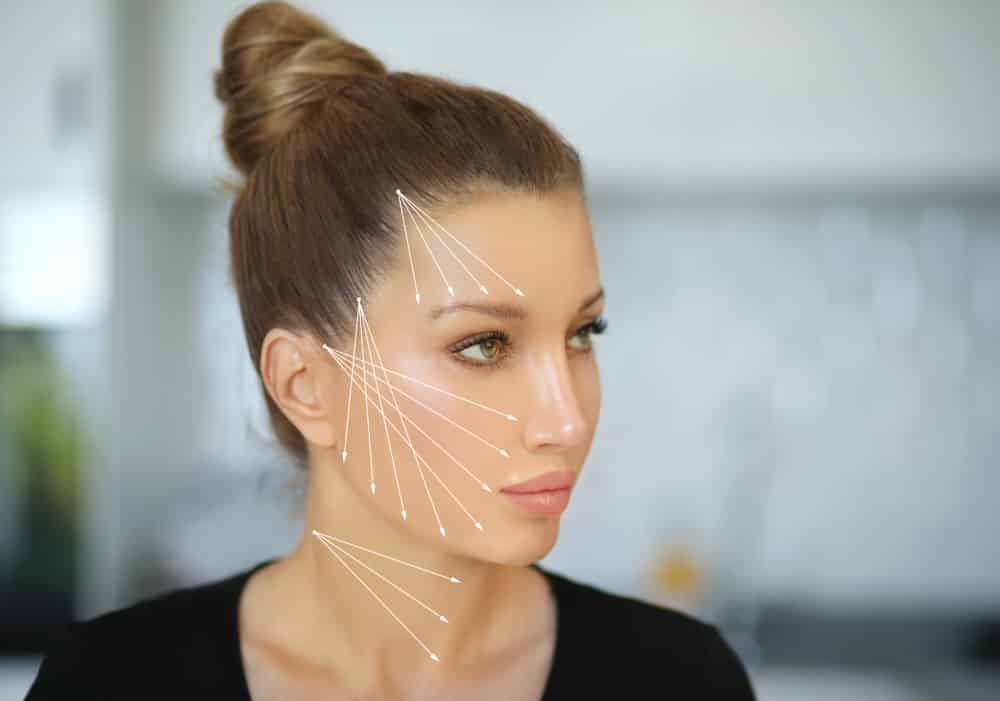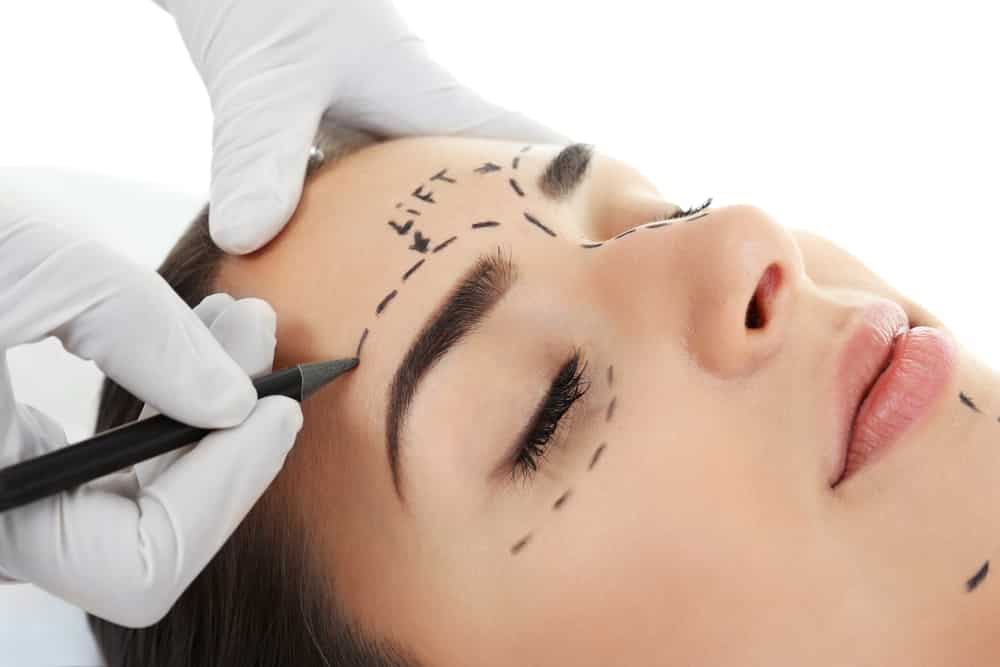PDO and PCL threads are both bio-degradable temporary sutures that are used to help lift and tighten the skin. Details of the two are as follows:
Polydioxanone (PDO):
– Last between 6 to 12 months; the sutures themselves dissolve after 6 months, but collagen production in the treated skin continues for up to 12 months.
– Improves fine wrinkles and reduces the size of the pores.
– Effectively improves the elasticity and tightness of the skin in the treated area.
– During the procedure the physical structure of the fat cells are altered at the cellular level, making a PDO thread lift a very effective method of facial shaping, contouring, and rejuvenation.
Polycaprolactone (PCL):
– Can last for more than 2 years. The threads are slowly absorbed into the body within 1 to 2 years compared to PDO threads which take between six and eight months. Because of this, the results from a PCL thread lift last longer, and collagen production can continue for a further year once the threads have completely dissolved.
– More potent than PDO threads at stimulating collagen production.
– Very flexible and highly elastic, causing less pain and discomfort for the patient compared to PDO threads.
Which areas are covered with PCL thread lift?
Because of its versatility, a PCL thread lift can treat virtually any area of the face, with the area under the chin being particularly effective. The cheeks and lower face and neck region are the most common areas treated, along with:
– The jowls
– The jawline
– Naso jugal folds
– Nasolabial folds
– Crow’s feet
– Undereye area
– Eyebrows
– Cheeks
– Marionette lines
How does PDO thread lift work?
A PDO thread lift is a procedure that uses temporary, bio-degradable, sutures to give the skin a subtle but visible “lift”, providing a non-surgical alternative to the traditional face-lift. Instead of the loose skin being removed surgically, portions of it are stitched up and suspended, causing it to pull back slightly and gently lift and tighten the face. In addition to being ideal for lifting the skin, PDO thread treatments can be also used to combat the signs of aging by stimulating the body’s natural production of collagen in the treated areas. This benefit is significant because of the vital role that collagen, or lack of it, plays in the aging process. All the time the threads are in place, the body will sense their presence as, albeit tiny, foreign objects and will be constantly seeking to heal the “damaged” area and eliminate the “threat”, in this case, the sutures. This process of healing and repairing at the cellular level stimulates collagen production, which in turn helps to strengthen the structure of the skin, leaving it looking tighter, smoother, and rejuvenated.
Who is a good candidate for PDO thread lift?
The ideal candidate for a PDO thread lift is someone in their late thirties to early fifties who has mild to moderate loose or sagging skin in the facial area (particularly under the chin where the threads are most effective), and who wants to enhance their appearance without having to use surgery. The patient must also be in good general health and have reasonable expectations of the outcome of treatment.
If you would like to know more about the thread lift services we offer, contact Lumina Aesthetics Clinic Today! We serve patients from Indonesia, Australia, Singapore, New Zealand, United States, United Kingdom, Swedia, United Arab Emirates, and Kuala Lumpur and look forward to meeting you!
Thread lifts have become increasingly popular procedures for patients seeking less invasive options for facial lifting. Since their introduction in 2010, absorbable polydioxanone (PDO) threads have become the leading choice for most practices.
A thread lift is a procedure that uses a dissolvable suture to tighten and lift your skin. It’s a less invasive procedure than facelift surgery and can often be performed in under 45 minutes without needing to go under a scalpel.
Polydioxanone (PDO) thread lifts use a biodegradable polyester suture. They’re best suited for rejuvenating your skin while some newer types of thread lifts are better at lifting sagging skin.
Let’s take a look at what makes a PDO thread lift different from other thread lifts and what you can expect during the procedure.
What makes PDO threads different?
PDO threads are one of three types of sutures commonly used in thread lift procedures. The other two types are made from polylactic acid (PLA) and polycaprolactone (PCA).
PDO threads have been around the longest of the three and have been used in surgeries since the 1980s. They’re made from a colorless polyester that breaks down in your body after about 6 months.
PDO thread lifts have a much lower risk of complications than facelift surgeries. There’s less risk of scarring, severe bruising, or bleeding when performed by a trained professional.
Minor complications occur in 15 to 20 percent of procedures but are usually easily corrected. Potential complications include:
- visible sutures (especially in people with thin skin)
- pain
- minor bruising
- infection
- snapping of threads
- accumulation of blood (hematoma)
- inflammation Trusted Source
- dimpling (orange peel-like skin texture)
- hair loss
- inflammation
- salivary gland injury
What areas of the face can a PDO thread lift treat
A thread lift can treat most parts of your face that are experiencing signs of aging. The areas around your cheeks, jaw, neck, and eyes are among the most commonly treated areas.
Because the results of thread lifts aren’t as drastic as the results of facelift surgeries, thread lifts are commonly used together with other anti-aging procedures such as HIFU or dermal fillers.
How long does a PDO thread lift last?
There was a noticeable decline in results 6 months later. Improvements were no longer apparent after 1 year.
In Aesthetic Surgery Journal, a surgeon with 16 years of thread lift experience says he has seen results last anywhere from 1 to 9 years. Younger people tend to have results that last 3 to 4 years. Older people with poor skin volume or elasticity tend to only see benefits for 1 to 2 years.
The procedure
You’ll likely be advised to avoid alcohol and tobacco use at least 5 days before your procedure, along with anything else that may increase the risk of bleeding or bruising, such as:
- Advil and ibuprofen
- aspirin
- omega-3 fatty acids
- green tea or green tea extracts
On the day of your procedure, Lumina’s doctor will talk you through the potential complications and give you advice about your recovery.
In general, it will probably look something like this:
- As you sit in a reclined seat, Lumina’s doctor will disinfect your face with alcohol. They’ll apply a local anesthetic with a needle under your skin.
- Lumina’s doctor will make a small incision with another needle and then insert a device called a cannula into the small hole.
- Lumina’s doctor will anchor the thread into place and pull out the cannula.
- They’ll finish by cutting the thread and making sure it’s secure in place.
- You’ll be free to go home shortly after the procedure.
thread lift recovery and aftercare
- Recovery from thread lift is minimal. You may have some swelling and bruising for the first 24 to 48 hours but you can return to most of your daily routines right away.
- You should avoid rubbing your face as much as possible the week after your procedure to avoid accidentally dislodging the thread. You’ll also likely be advised to avoid pursing your lips, smoking and drinking through a straw for the first several weeks.
- Other activities you may want to avoid for 1 to 2 weeks include sleeping on your side, intense exercise, and visiting saunas.
- Sleeping with your head propped on a pillow can help you avoid accidentally rolling onto your face during the middle of the night.
PDO thread lift price
The price of a thread lift can vary widely and depends on many factors and is depending on how many threads that you need – we highly recommend to our patient for direct consultation with our doctor, so we can assist and explain how many threads also the budget that you need to prepare for this thread lift procedure.
A thread lift is a procedure that uses dissolvable sutures to rejuvenate and lift sagging skin. It’s a cheaper and faster alternative to facelift surgery, but the results don’t last as long and aren’t as dramatic. Recovery from the procedure is minimal and it’s often possible to return to work the same day.
If you want to rejuvenate your skin then contact Lumina Aesthetics and get younger-looking skin. We are conveniently located at Jl Dewi Sri Kuta Bali, Indonesia For more information, please call us or request an appointment online +6281210688884 / +6281228888837 or Email : [email protected]






